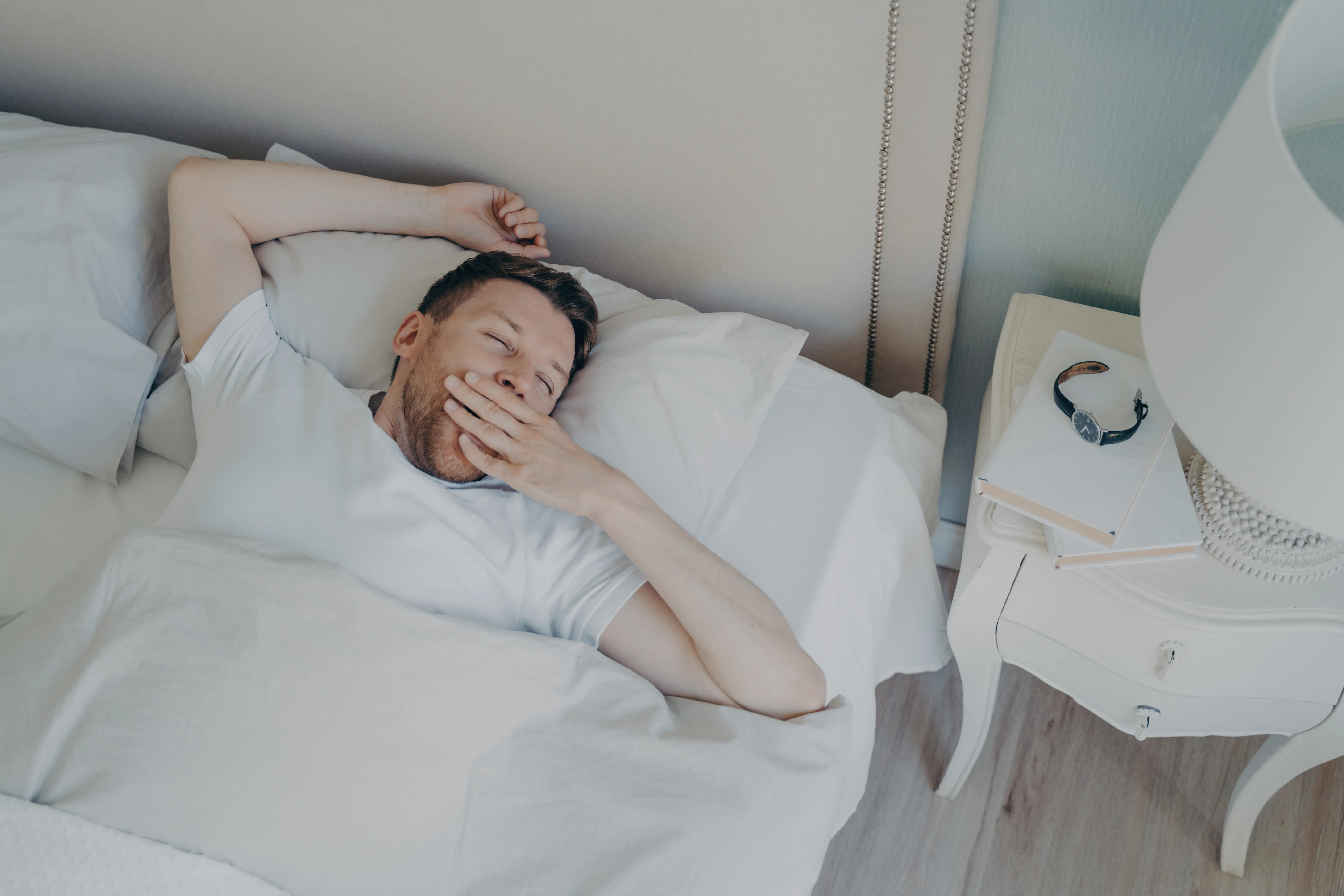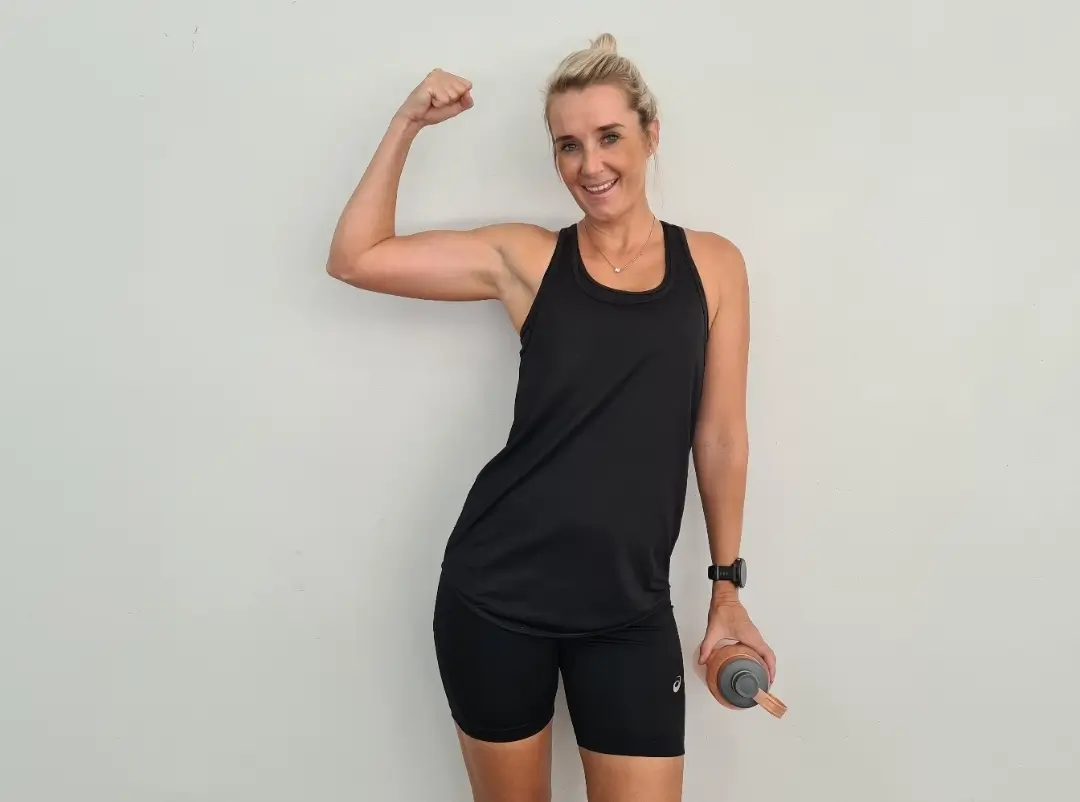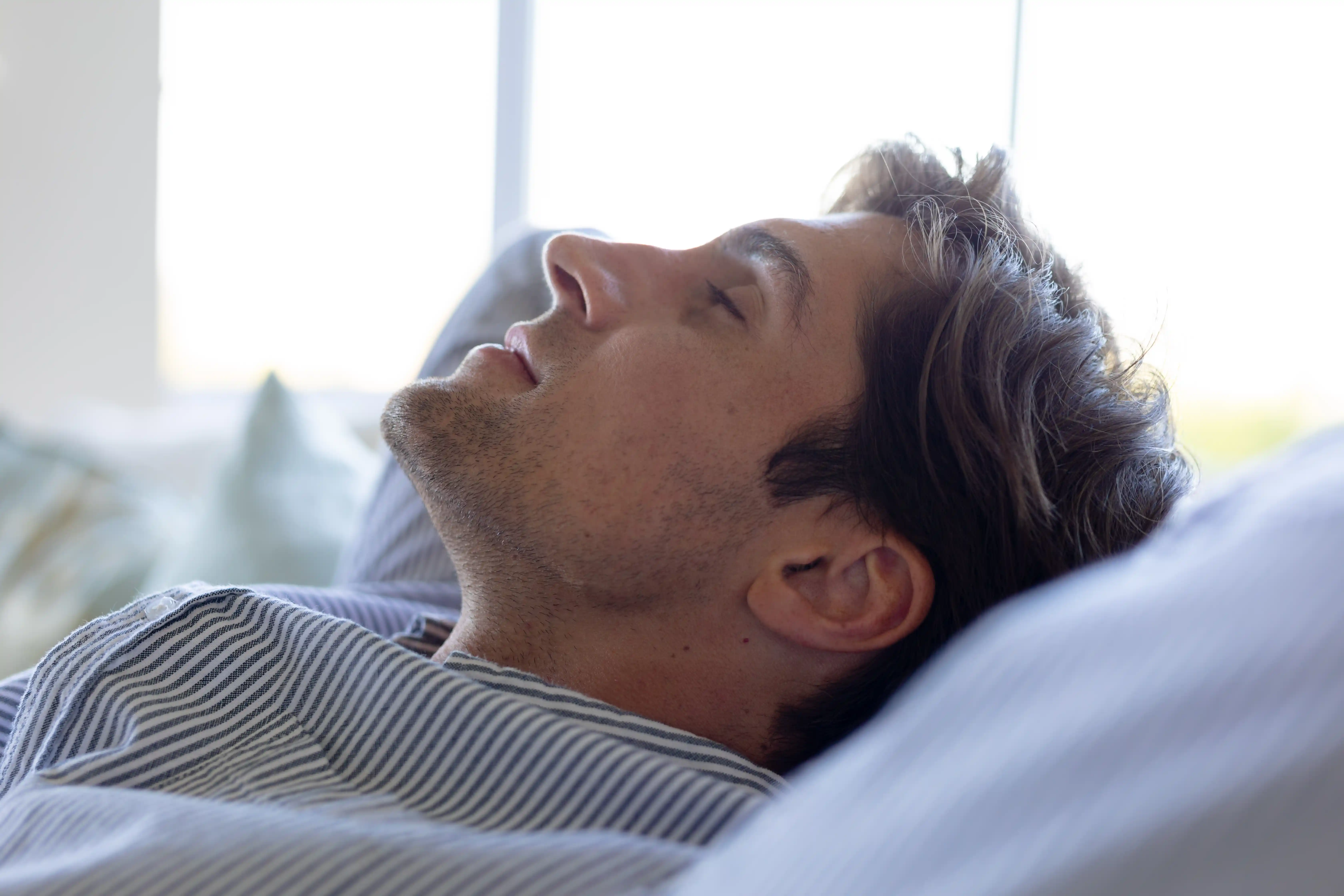Sleep apnea can seriously affect your health, energy, and everyday life. Many people use CPAP machines, also known as continuous positive airway pressure devices, to manage it, but not everyone finds them easy or comfortable to use.
That is where Inspire comes in. It is a surgical option that does not involve a mask, made for people with obstructive sleep apnea who have not had success with other treatments.
In this article, we will take a closer look at Inspire therapy and what it offers. You will find out how it works, what the procedure involves, who it is meant for, and how it measures up against other treatments for sleep apnea. We will also go over how effective it is, what recovery involves, and what you should know about possible risks, insurance, and long-term use.
What Is Inspire Sleep Apnea Treatment?
Inspire is a surgically implanted device used to treat moderate to severe obstructive sleep apnea (OSA), especially in people who cannot tolerate CPAP therapy.
Instead of using air pressure to keep the airway open, Inspire works from inside the body by stimulating the hypoglossal nerve, which controls the tongue. This helps keep the tongue from falling backward and blocking the airway during sleep, which allows for steadier breathing throughout the night.
The device is placed under the skin in a straightforward outpatient procedure. Once you’ve healed, you can use a small remote each night to switch it on before going to sleep. It works by following your natural breathing pattern and adjusts automatically, so there’s no need for any outside equipment.
The Inspire Implant Procedure
The device is placed during a brief outpatient surgery that typically takes two to three hours. While you're asleep under general anesthesia, the surgeon makes two small cuts, one in your upper chest and another just under your chin.
A small pulse generator is placed in your chest, along with two thin wires. One connects to the nerve that controls how your tongue moves, and the other sits near your ribs to monitor your breathing as you sleep.
Most people go home the same day. Recovery is usually straightforward. About a month later, the device is turned on during a follow-up visit, where a sleep specialist adjusts it to fit your breathing needs.
How Inspire Therapy Works
Inspire helps you breathe better by detecting each breath and sending a gentle signal through hypoglossal nerve stimulation to the airway muscles while you sleep. The signal is sent only when you inhale, helping to move your tongue forward so your airway stays open. The signal is sent only when you inhale, helping to move your tongue forward so your airway stays open.
The stimulation reaches the hypoglossal nerve, which plays a key role in controlling how your tongue moves. By stopping the tongue from slipping backward during sleep, Inspire helps reduce one of the major reasons behind OSA.
The Inspire system is made up of three main parts:
- Implantable Pulse Generator: Sends light electrical signals to the nerve that controls tongue movement.
- Breathing Sensor Lead: Tracks your breathing patterns while you sleep.
- Stimulation Lead: Gently move the tongue forward to help keep your airway clear.
Once the system is turned on, it runs on its own. Some people feel the stimulation at first, but most adjust to it quickly and sleep without any trouble.
Benefits of Inspire Therapy
Inspire is more than just another option. It's a straightforward, easy-to-use solution for people who have a tough time with CPAP machines. It runs quietly, is simple to control, and works with your natural breathing while you sleep.
Here are a few common benefits people often mention:
- No Mask or Tubing: You do not need to wear anything on your face or deal with hoses or cleaning.
- High Satisfaction: Many users say they sleep better and would choose Inspire again if given the option.
- Reduced Snoring: A noticeable drop in snoring is common, often reported by sleep partners.
- Personal Control: You can turn the device on or off with a remote.
- Quiet Operation: Since there are no motors or airflow systems, it works silently.
- Improved Sleep Quality: With fewer breathing disruptions, many people wake up feeling more rested and alert, which results in improved sleep quality.
Who Is Inspire For?
Inspire is designed for people with OSA who haven’t had success with CPAP therapy and want something less invasive than major surgery but more effective than a mouthguard. That said, it’s not for everyone. Even though it’s FDA-approved, there are specific medical rules and eligibility requirements to follow before it can be considered.
To figure out if you qualify, you’ll go through a few evaluations, beginning with a proper sleep apnea diagnosis with a doctor trained in Inspire therapy. This usually includes a recent sleep study and a special checkup called a DISE (drug-induced sleep endoscopy), which shows how your airway behaves while you're asleep. It helps make sure there’s nothing getting in the way of the treatment working properly.
Here's a breakdown of what most candidates need to meet:
- Age 18 or older: This treatment is only approved for adults.
- Moderate to Severe OSA: Your apnea hypopnea index, which measures how many times your breathing slows or stops during sleep, should be between 15 and 65.
- CPAP Intolerance: If you’ve tried using a CPAP machine but found it too uncomfortable, not helpful, or hard to keep using, Inspire may be a better option.
- BMI Limitations: Most programs ask that your body mass index (BMI) be 32 or lower. Some may consider up to 35, depending on your specific case.
- No Central Apnea: Inspire is designed to treat OSA. If more than one-fourth of your apnea episodes are mixed or central sleep apnea, this treatment likely won’t work well for you.
- Airway Exam: You’ll need to pass a DISE test to confirm that your airway doesn’t fully collapse at the soft palate, which is something Inspire isn’t built to fix.
Is Inspire Effective?
Inspire therapy has shown strong results for many people dealing with OSA, especially those who had trouble using CPAP machines. Instead of using air pressure from the outside, Inspire works from within the body by gently stimulating the nerve that controls tongue movement. This helps keep the airway open during sleep.
What makes Inspire different from other treatments is that it doesn’t involve a mask or force changes to your jaw position. Instead, Inspire quietly follows your breathing rhythm and gives just enough support from inside to help keep your airway open while you sleep.
Clinical Outcomes
Doctors look at a few key signs to see how well Inspire is helping. They monitor how often breathing pauses happen during sleep, how much your oxygen levels dip, and how you feel after starting the treatment. Both clinical research and patient follow-ups show consistent improvement in all of these areas:
- AHI Reduction: Clinical data shows that Inspire can lower the Apnea Hypopnea Index (AHI) by an average of 68 percent. In many cases, patients cut their AHI by half or more. This means fewer breathing pauses and more restful, uninterrupted sleep.
- Improved Oxygen Levels: Inspire has been found to help the body keep oxygen levels steadier during sleep. In one study, around 75 percent of users showed clear improvements in how often their oxygen dropped overnight. This means the body gets more of the oxygen it needs to recover and function properly while you sleep.
- Patient Satisfaction: Over 90 percent of people using Inspire report being satisfied with the results. They claim to sleep better, snore less, and feel more alert during the day. Many would recommend the therapy to others, and even their sleep partners often notice the difference, enjoying quieter nights and better rest too.
Compared to Other Treatments
Inspire isn’t for everyone, but for many people, it provides a more comfortable and lasting way to manage sleep apnea. Here’s how it stacks up against other common treatments:
- CPAP: Even though CPAP therapy is one of the best treatments for OSA, some patients may find it difficult to tolerate. Some people have concerns about mask discomfort, airflow sensitivity, and noise, or simply prefer not to rely on machines to support their respiratory system overnight. Inspire offers an alternative that does not require external equipment, and many patients find it easier to maintain long-term.
- Oral Devices: Mouthpieces or other dental tools may help with mild sleep apnea but are usually not strong enough for moderate or severe cases. Inspire provides more reliable results for people with more serious symptoms.
- Surgery: Some surgical procedures for sleep apnea can be effective, but they are permanent and may come with higher risks. On the other hand, inspire involves a smaller procedure that can be adjusted over time or removed if you want to, making it a safer and more flexible option for long-term care.
In short, Inspire gives people who can’t use CPAP a solid, long-term option for treating sleep apnea. It works with your natural breathing, not against it, and for many, it leads to better sleep and a noticeable boost in daily quality of life.
Risks and Side Effects

Inspire is safe for most people and well tolerated, but since it involves a surgical procedure, there are some risks to keep in mind. The reassuring part is that most side effects are mild and go away with time, especially when the surgery is done by a specialized doctor and followed by the right care. Still, it is important to understand what you might experience, from minor discomfort to rare complications.
Possible Issues After Surgery
Here are some of the side effects people most often notice. They usually ease up within a few days or weeks, either after surgery or once the device starts being used:
- Pain or Swelling: You might feel sore, tender, or a little swollen near the spots where the incisions were made, usually in the upper chest and under the chin. Over-the-counter pain medicine often helps manage this.
- Tongue Discomfort: After the device is activated, you might feel a light tugging, tingling, or even mild tongue soreness under your tongue. That’s just the nerve being gently stimulated to help keep your airway open. Usually, it doesn't hurt, and most people claim that as they adjust, the sensation goes away.
- Temporary Weakness: Some patients say their tongue feels slightly weak or tired when talking or eating, especially early on. This usually fades as your tongue gets used to the stimulation.
- Dry Mouth or Hiccups: Mouth dryness and hiccups can happen when the device is first turned on, especially if the settings are a little too high. Your doctor can adjust the settings during a follow-up visit to help fix this.
Rare Complications
The following complications aren’t common, but they have been reported and may require extra medical care or minor intervention:
- Infection: As with any implant, there's a small chance of infection at the surgical sites. Symptoms include redness, warmth, or unusual drainage and may require antibiotics or, in rare cases, removal of the device.
- Nerve Irritation: Few people experience numbness, tingling, or twitching. These are typically temporary, but depending on how your body responds, they might take longer to fade away.
- Device Malfunction: The device may stop working properly due to lead displacement or battery issues. In rare cases, revision surgery may be needed to reposition or replace parts of the system.
Most side effects can be handled with proper follow-up and device adjustments. If anything feels off or unusual, it’s always best to speak to your doctor rather than ignore it, especially in the first few months of use.
What to Expect After Surgery
Getting the Inspire device is a simple, outpatient procedure, but there’s still a short recovery period and a few long-term things to keep in mind. Most people bounce back quickly, and for many, the benefits far outweigh the brief downtime. Here’s a clear look at what to expect right after surgery, down the line, and when it comes to scans or imaging.
Recovery Timeline
You’ll likely go home the same day as your surgery. For the first few days, expect a bit of soreness or swelling around the incision spots, one in the chest and one under the chin. Heavy lifting or intense movement should wait a week or two, but light walking is usually okay after a day or so.
By week four, most people feel back to normal. That’s when your sleep specialist will activate the device and fine-tune it to your breathing and comfort level. You may need a few check-ins to get it just right, but most people adjust quickly. After a while, the gentle sensation becomes barely noticeable.
Long-Term Maintenance
Once it’s running, Inspire doesn’t need much daily care. Still, here are a few things to remember for long-term use:
- Battery Life: The battery inside the device typically lasts around 11 years, depending on how often you use it each night.
- Replacement: When the battery runs low, it can be swapped out with a short outpatient procedure. No need to replace the entire system, just the battery unit.
- Remote/App Control: You’ll get a small remote to turn the device on and off each night. Some clinics also offer Bluetooth or app access to help track use and make easy adjustments if needed.
MRI and Imaging Restrictions
Because the device is implanted, not all scans are allowed. You can safely get MRIs of your head, neck, arms, and legs as long as the technician follows specific safety instructions. Chest and torso MRIs are off-limits, though, since they could interfere with the device.
You can still get CT scans, X-rays, and ultrasounds anywhere on your body, including the chest. If you need regular chest MRIs or already have a heart device like a pacemaker, talk to your doctor first to make sure Inspire is still a safe choice. In many cases, it works just fine with other medical devices, but that’s decided on a case-by-case basis.
When to Seek Treatment for Sleep Apnea

It is easy to miss the warning signs of sleep apnea. A lot of people live with the symptoms for years, brushing them off as normal, thinking snoring or feeling tired all the time is just how life is. But if OSA is not treated, it can lead to serious health problems over time.
These may include heart disease, high blood pressure (also known as hypertension), diabetes, and a higher chance of accidents caused by sleep deprivation and feeling overly sleepy during the day. Sleep apnea can result from lifestyle, anatomical issues, or even genetic factors.
If you recognize any of the signs listed below, it might be a good idea to talk with a sleep specialist. A sleep study and the right treatment can help protect your health, improve your energy, and make a big difference in how well you sleep and feel each day.
- Loud Snoring: If you snore loudly and regularly, especially if a partner or family member has mentioned it, it could be a sign of a blocked airway during sleep.
- Gasping for Air: Waking up suddenly feeling short of breath or noticing pauses in your breathing while asleep is a major sign that your airway may be closing at night.
- Daytime Sleepiness: If you're feeling tired throughout the day, even after a full night in bed, or notice excessive sleepiness that makes it hard to stay alert, it could be a sign of daytime sleepiness linked to sleep apnea. This symptom happens when your breathing gets interrupted during the night, stopping you from reaching the deep, restful sleep your body needs to recharge, which can lead to persistent drowsiness during the day.
- Insomnia: Struggling with insomnia can sometimes be connected to sleep apnea. Brief pauses in breathing may prevent your brain from reaching deeper, more restful sleep.
- Brain Fog: That mental fuzziness you feel during the day, known as brain fog, may relate to poor sleep quality. If focusing or remembering things is difficult, untreated apnea could be disturbing your rest.
- Morning Headaches: Waking up with a headache in the morning may be linked to reduced oxygen levels during sleep. These drops can influence blood flow and leave you starting your day feeling unwell. Some people also experience mood changes or irritability due to disrupted sleep.
- Dry Mouth: Breathing through your mouth, often due to a blocked airway, can cause dryness or soreness in your mouth and throat when you wake up.
FAQs
What does Inspire sleep apnea treatment do?
Inspire helps treat OSA by sending gentle signals to the hypoglossal nerve, which moves the tongue forward during sleep. This prevents the airway from closing, allowing you to breathe normally without needing masks or hoses.
Is Inspire sleep apnea treatment safe?
Yes, Inspire is approved by the FDA and is generally safe for most adults with moderate to severe OSA who cannot tolerate CPAP. Surgery has risks, but most side effects are mild, short-term, and treatable.
Who cannot use Inspire for sleep apnea?
Inspire is not suitable for everyone. It is not advised for people under 18, those who have more than 25 percent central or mixed apnea events, individuals with a body mass index higher than 32 to 35, or anyone found to have complete soft palate collapse during a special airway test called DISE.
What are the negatives of Inspire for sleep apnea?
Some drawbacks include the need for surgery, possible side effects like tongue discomfort or dry mouth, the inability to have chest MRIs, and higher costs. Some patients initially feel the gentle stimulation, but this sensation usually fades over time.
How much does the Inspire implant cost?
The cost for Inspire in the United States typically ranges from $30,000 to $40,000, including both the device and surgery. Many insurance plans and Medicare help cover it if you meet certain requirements; however, what you pay out of your pocket depends on your specific policy and deductible.
Conclusion
Inspire is a promising choice for people with moderate to severe OSA who have not found relief with CPAP. Since it works from inside the body to keep the airway open, it offers freedom from wearing masks, quieter nights, and the possibility of better sleep and more energy during the day.
Just as with any medical treatment, Inspire is not the right option for everyone. It may not be suitable for certain conditions, requires surgery, and has some risks. Even so, many people feel that the benefits outweigh the drawbacks, reporting high satisfaction and noticeable improvements in their sleep quality.
If you are dealing with sleep apnea and CPAP has not worked for you, it may help to speak with a sleep medicine specialist about whether Inspire is a good choice. Understanding all your treatment options is a key step toward safer, healthier, and more restful nights.
Karen Barnard
Karen is a Human Movement Science expert and a certified sports nutrition and massage therapist. At Sleepiverse, she combines her passion for human movement science and sleep health to educate herself and her readers about healthier sleep. In addition to writing articles, Karen manages a fitness studio offering private training, athletic conditioning, and sports massage therapy. She focuses on providing people with a holistic environment for people to reach their health goals, often incorporating stretch therapy to promote mental tranquillity and help people improve their sleep.


